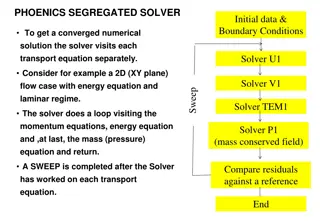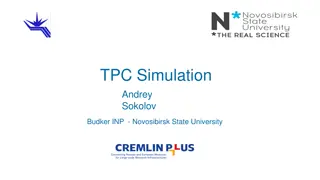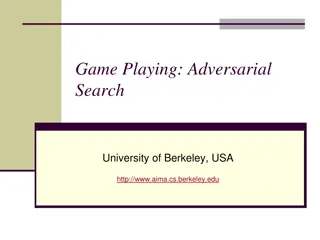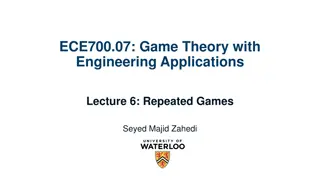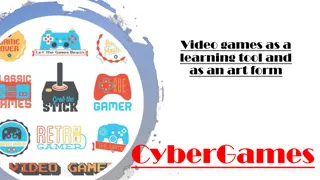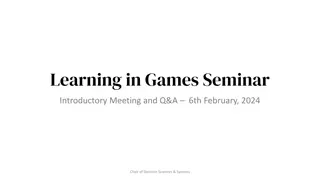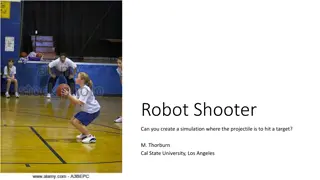Insights into Games, Simulations, and Learning Environments
Discover the multifaceted aspects of games, simulations, and learning through a comprehensive exploration of their characteristics, purposes, and applications. From the elements that make games engaging to the utility of simulations in replicating real-world scenarios, this content delves into the distinct features and benefits of each educational tool.
Download Presentation

Please find below an Image/Link to download the presentation.
The content on the website is provided AS IS for your information and personal use only. It may not be sold, licensed, or shared on other websites without obtaining consent from the author. Download presentation by click this link. If you encounter any issues during the download, it is possible that the publisher has removed the file from their server.
E N D
Presentation Transcript
1. Games are a form of fun. That gives us enjoyment and pleasure. 2. Games are form of play. That gives us intense and passionate involvement. 3. Games have rules. That gives us structure. 4. Games have goals. That gives us motivation. 5. Games are interactive. That gives us doing. 6. Games are adaptive. That gives us flow. 7. Games have outcomes and feedback. That gives us learning. 8. Games have win states. That gives us ego gratification. 9. Games have conflict/competition/challenge/opposition. That gives us adrenaline. 10. Games have problem solving. That sparks our creativity. 11. Games have interaction. That gives us social groups. 12. Games have representation and story. That gives us emotion. (Prensky)
Chapter 7 Games and Simulations
How are games, tests, and simulations related? ? ? We may have recorded scores in games We may have immediate feedback in tests
My definition Simulations are simplified real world situations in a controlled environment. They are about things or systems and how they behave. Games are either all about fun OR a combination of fun and learning. Tests are merely about learning. In test the feedback is written in games the feedback is the consequence of the player s actions/decisions. Demos Tests Simulations learning games fun games Formal Informal Less Interactive More Interactive Less fun More fun
Range of games From a simple spreadsheet to complex and expensive designs.
Why Games Show consequences not normally visible Let learners make mistakes without suffering permanent consequences Encourage learners to pause, reflect, and revise Provide a laboratory Simplify complex situations Give opportunities for abundant practice and feedback Reawaken learning by play
When to use games Costs of failure are high Learning with real systems is not practical Learners need individual attention Many people must be educated Tasks are complex and time is short Skills to be taught are subtle and complex You have time and budget to see the project through
8 TYPES OF LEARNING GAMES (Simulations) 1 2 3 4 5 6 7 8
1- Quiz-show games Who wants to be a millionaire? Jeopardy Deal or no deal
2- Word Games Crossword Puzzles Letter arrangement games Spelling bee Hangman
3- Jigsaw Puzzles A scrambled-tile puzzle can help learners recall images, visualize relationship, or notice discriminating details.
http://www.horton.com/portfolio/jigsaw/jigSawHierarchyPractice.htm
5- Task simulations Software simulations Device simulations
Immersive role-playing games EAP Employee Assistance Program
DESIGN GAMES FOR LEARNING General guidelines to design games
1- Choose the type of game based on your objective
Feel IAT Implicit Association Test
2-Express the goal as a specific task ETEC 444 What to buy with $3000
4-Emphasize learning, not just doing Make winning the game require creativity and careful decisions, not just fast reflexes Avoid arbitrary limitations on how the learner accomplishes the goal.
6- Manage competitiveness Excessive competitiveness can get in the way of effective learning
7- Provide multiple ways to win (learn) Provide hints or links to resources not just trial-and-error
CREATE A MICRO-WORLD More specific design guides
1- Specify the game's world Specify Characters Objects (tools, furniture, that the users will interact with) Locations Relationships Laws of math and science Other dynamics and conditions (too much fertilizer)
2- create a storyline Starting point Ending point Learner s role Path from start to end
3- Create a back story For complex games you need to explain the context or the back story
4- Specify the game structure Good structure keeps the game simple enough tor learners to comprehend.
5- Assign the learners role Pose the learner a problem to solve in a specified situation.
6- Make the game meaningfully realistic It does not mean use realistic 3D images A game is realistic if it:
7- Specify rules of the game What the player can do and how the game responds or evaluates.
9- Provide a deep, unifying challenge Unify the game around a primary mission or goal.
10- Define indicators of game state and feedback Decide what kind of feedback you will provide and where and where it will appear to the learner
SPECIFY THE DETAILS Very Specific Design Guides
Sketch out the user interface Write the words Specify the graphical style Specify other media
ENGAGE LEARNERS Hook the learner Ask learners to suspend disbelief Set the context Provide real-world prompting and support Present solvable problems Adapt to the learner s needs Challenge with time limits Let learners try multiple strategies Program variety into the game Involve the learner






